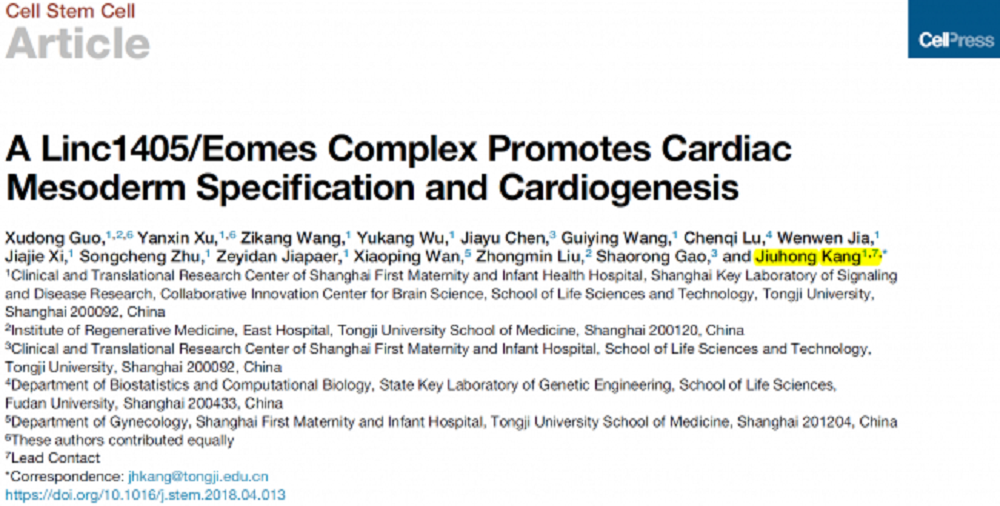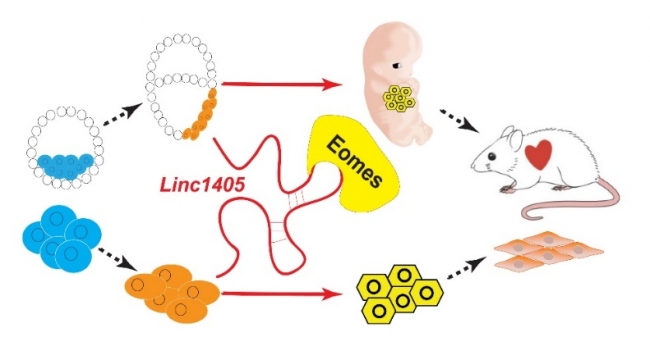On May 10th, a research paper on the results of the research team, led by Professor KANG Jiuhong from the School of Life Science and Technology, Tongji University, was published online in the international leading academic journal, Cell Stem Cell. The paper was titled: ‘A Linc1405/Eomes Complex Promotes Cardiac Mesoderm Specification and Cardiogenesis.’ The research reveals the mechanism the large intergenic non-coding RNAs (lincRNAs) displays in precisely regulating the expression of downstream cardiac genes during cardiac mesoderm specification by functionally interacting with transcription factors and epigenetic modulator complex during cardiac mesoderm specification of embryonic stem cells.


Linc1405/Eomes Adjusting Cardiac Differentiation and Cardiac Development
Life science experts say the explanation of the mechanism which forms regulatory complexes under the dominance of lincRNA enriches our understanding of non-coding RNAs involved in gene expression regulatory networks in cardiac differentiation. The mechanism will increase significantly the complexity of the interplay between transcription factors and epigenetic modification regulation. Meanwhile, it also accentuates the specificity of the epigenetic regulation. These findings will provide further clues and evidence for the better understanding of the molecular roles in the cardiac development.
Professor KANG is the corresponding author of this paper whose co-first authors are Dr. GUO Xudong and Dr. XU Yuxin, both from Tongji University. Also participating in this research were eight more researchers, including Ph.D. students: WANG Zikang, WU Yukang, and Dr. WANG Guiying.
The research group led by KANG has long been dedicated to the research of the non-coding RNAs’ epigenetic regulation mechanisms in the pluripotency maintenance and fate determination of embryonic stem cells and has published a number of marked research results in some renowned journals over the past two years, such as Nucleic Acids Research, Cell Reports, Stem Cell Reports, and Journal of Molecular Cell Biology.
link:https://doi.org/10.1016/j.stem.2018.04.013